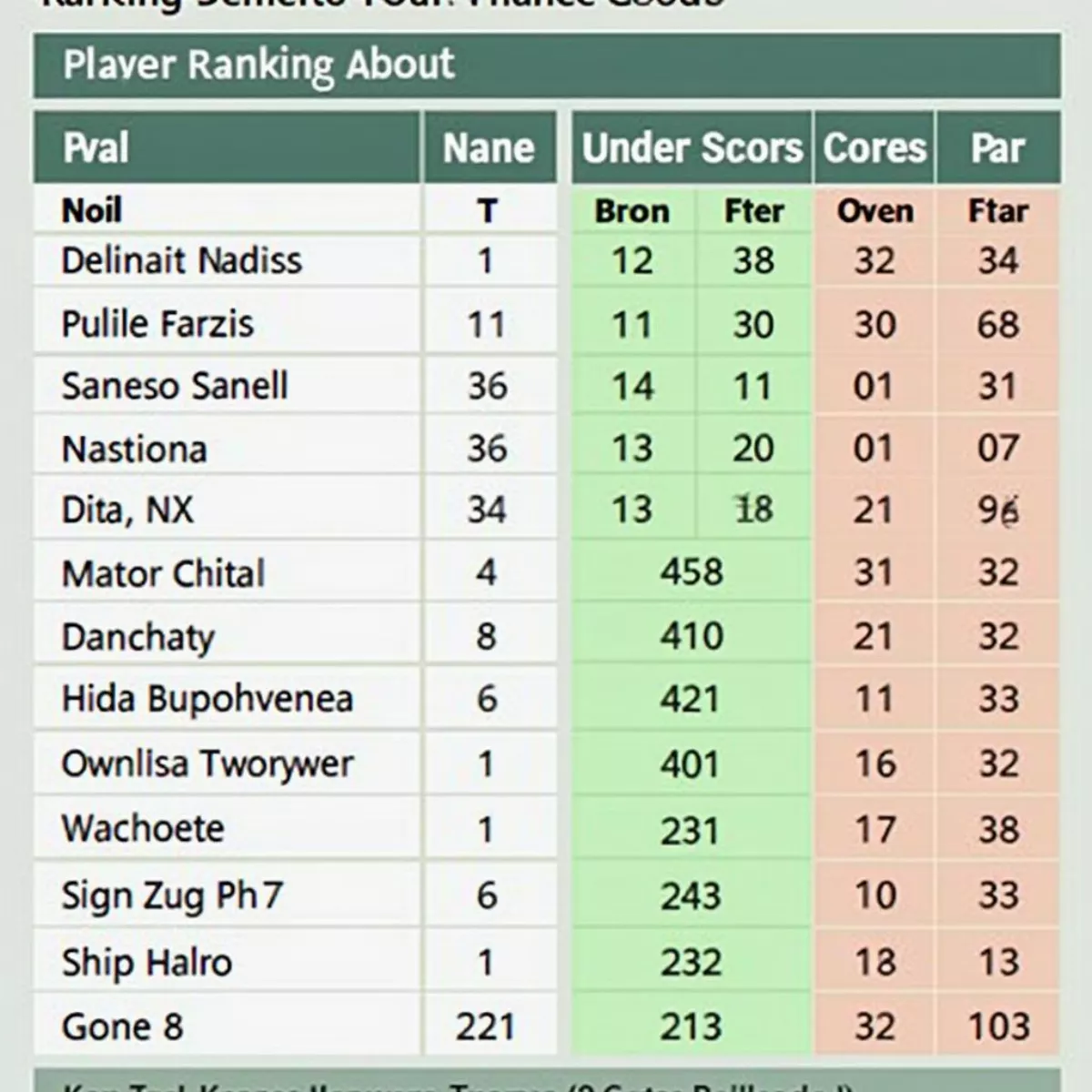Golf can often seem like a foreign language, especially when you’re watching it on TV. If you’ve ever found yourself watching a tournament and wondering what the scores really mean, you’re not alone. The scores displayed on those big screens can be confusing, even for seasoned spectators. In this comprehensive guide, we’ll decode golf scores for you, making it easy to understand the numbers flashing before your eyes.
What Does Each Score Mean?
When you watch golf on television, you’ll typically see a leaderboard showing players’ scores. Here are some common terms you need to know:
- Par: This is the number of strokes an expert player is expected to need to complete a hole or the entire course. Each hole will have a par, which can be 3, 4, or 5.
- Birdie: A score of one stroke under par on a hole.
- Eagle: Two strokes under par on a hole.
- Bogey: A score of one stroke over par on a hole.
- Double Bogey: Two strokes over par on a hole.
- Score relative to par: This is how scores are usually reported, like “3-under” or “1-over.”
Sample Score Interpretation
To illustrate, let’s consider a scenario:
- Player A: 68 (-4)
- Player B: 72 (E)
- Player C: 74 (+2)
In this context:
- Player A completed the course in 68 strokes, which is 4 strokes under par.
- Player B completed it in 72 strokes, which is exactly even with par.
- Player C took 74 strokes, which is 2 strokes over par.
 Golf Leaderboard Example
Golf Leaderboard Example
Understanding Leaderboards
Leaderboards can look daunting at first glance, but they follow a standard format. Here’s a breakdown of what to look for:
| Column | Description |
|---|---|
| Rank | Indicates each player’s position in the tournament. |
| Player Name | Full name of the golfer. |
| Score | How many strokes the player has taken so far. |
| Total | Total number of strokes played. |
| Par | The par score for the course. |
Example of a Leaderboard:
| Rank | Player Name | Score | Total | Par |
|---|---|---|---|---|
| 1 | Player A | -4 | 68 | 72 |
| 2 | Player B | E | 72 | 72 |
| 3 | Player C | +2 | 74 | 72 |
Additional Indicators
To further assist you in interpreting golf scores, networks may use color-coding and symbols:
- Green Background: Indicates under par (birdie, eagle).
- Yellow Background: Indicates even par.
- Red Background: Indicates over par (bogey, double bogey).
Scoring Formats in Golf Tournaments
This is where things can get a little tricky. Scoring can differ based on the type of golf tournament:
- Stroke Play: The player with the lowest total strokes wins.
- Match Play: Players compete on a hole-by-hole basis. The player who wins the most holes wins, even if they had a higher total score.
- Stableford: Points are awarded based on the score relative to par.
 Golf Course with Flags and Scoreboard
Golf Course with Flags and Scoreboard
How to Interpret Different Formats
- In match play, if Player A has a score of 3 up against Player B after 12 holes, it means Player A is ahead by three holes.
- In stroke play, the cumulative score is paramount. For instance, if Player A finishes with 70 and Player B with 74, Player A wins regardless of how many holes they might have led by.
Why Understanding Golf Scores Matters
Understanding golf scores enhances your viewing experience. It deepens your appreciation for strategy, skill, and the stakes involved. Here are a few reasons why it’s beneficial:
- Appreciation: Recognize the significance of each stroke.
- Engagement: You’ll be able to engage more deeply in discussions about strategies, player performances, and potential outcomes.
- Confidence: Armed with this knowledge, you can enjoy the game without constantly needing to seek explanations.
Tips for Watching Golf Scores
- Familiarize Yourself with the Course: Knowing the par for each hole can help you interpret scores more readily.
- Follow a Player: Stick with one or two golfers throughout the tournament. Track how their scores change.
- Watch Commentaries: Golf commentators often provide insights into how scores relate to strategy, so pay close attention.
Key Takeaways
- Understand the Fundamentals: Familiarize yourself with terms like par, birdie, and bogey.
- Become Aware of Scoring Formats: Different formats mean different rules, so know the type of tournament being played.
- Read the Leaderboards: Pay attention to how scores are presented, including symbols and colors.
- Engage with the Game: Understanding scores will enrich your overall enjoyment of golf.
FAQ
1. What is a “par 72” golf course?
A par 72 course means that an expert golfer is expected to complete the course in 72 strokes. This usually consists of several holes with varying par values of 3, 4, or 5.
2. How do I know if a player is doing well?
If a player’s score is below par, such as -1 or -5, they are performing well. A score above par (e.g., +1) indicates they are having a harder time.
3. What does “score relative to par” mean?
“Score relative to par” indicates how a player’s score compares to the expected par. For example, -3 means three under par, and +2 means two over par.
4. What is the difference between stroke play and match play?
In stroke play, the total strokes taken determine the winner, while in match play, players compete for the most holes won, regardless of total strokes.
5. What does “on the clock” mean in golf?
Being “on the clock” means a player is being timed and must complete their shot within a specific time frame to avoid penalties.
6. How can I become more knowledgeable about golf?
Watch tournaments regularly, read golf-related articles, and participate in discussions with fellow golf fans to gain insights.
7. Why do golfers take different scores on the same course?
Each player has unique skill levels and synergies with various aspects of their game, leading to varying scores on the same course.
 Professional Golfer Taking a Shot
Professional Golfer Taking a Shot
8. What happens in the event of a tie?
In the event of a tie, playoff holes or sudden death situations may occur to determine the winner.
9. Does weather affect golf scores?
Yes, weather significantly affects playability and can lead to higher scores. Wind, rain, and temperature changes can impact player performance.
10. What is the significance of birdies and eagles?
Birdies and eagles are critical indicators of a player’s ability to outperform the expected par and are key for successful tournament play.
Hopefully, this guide has clarified how to interpret golf scores shown on television screens. With a deeper understanding of these scores, you’ll appreciate tournaments more fully and engage confidently in discussions about this captivating sport. Happy viewing!